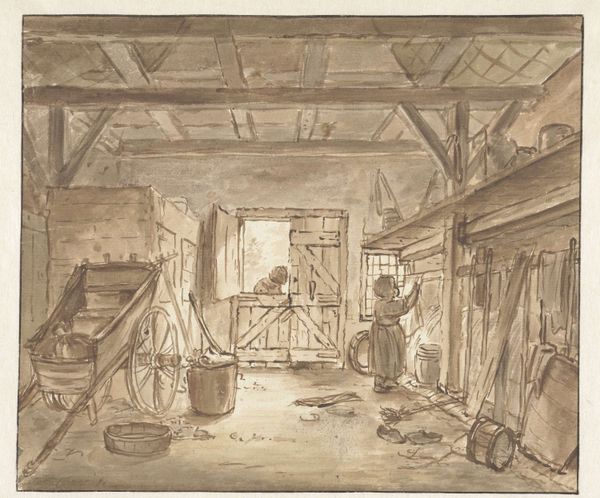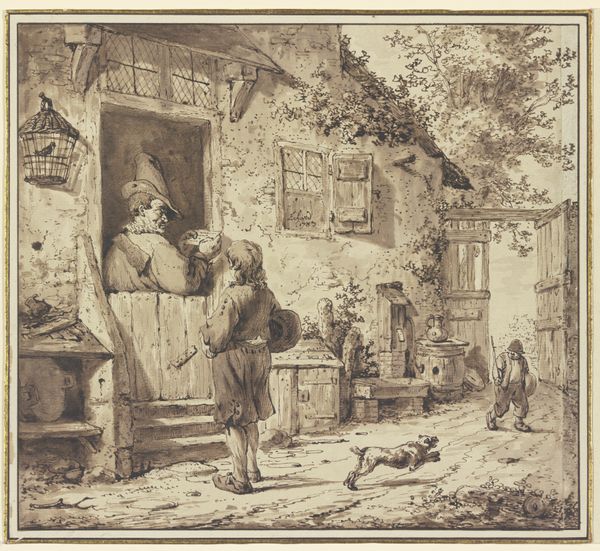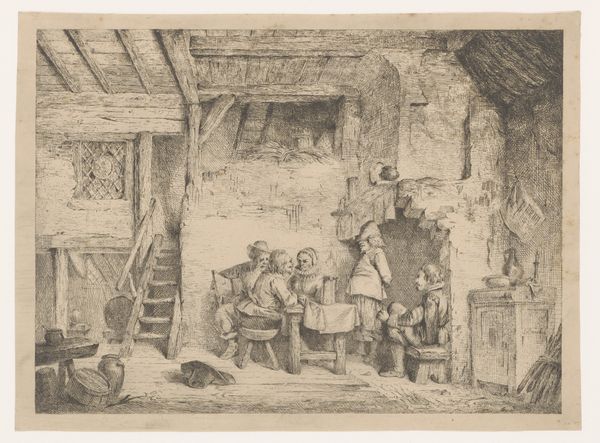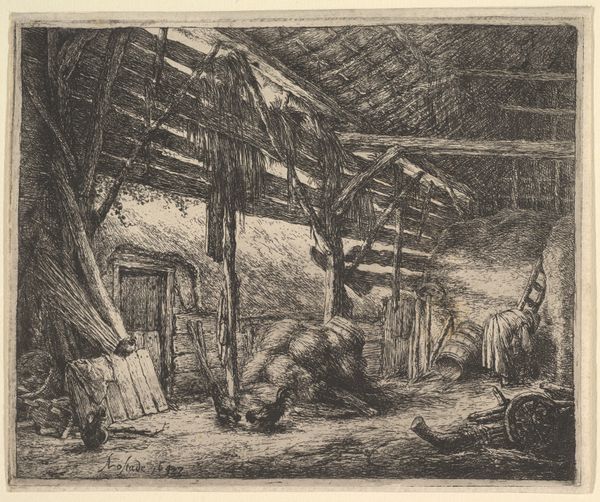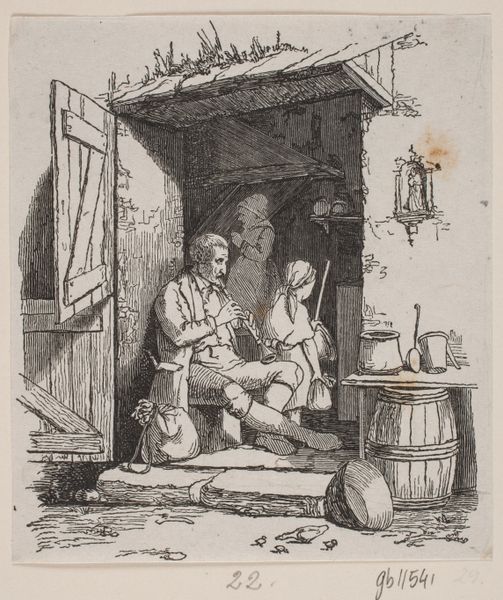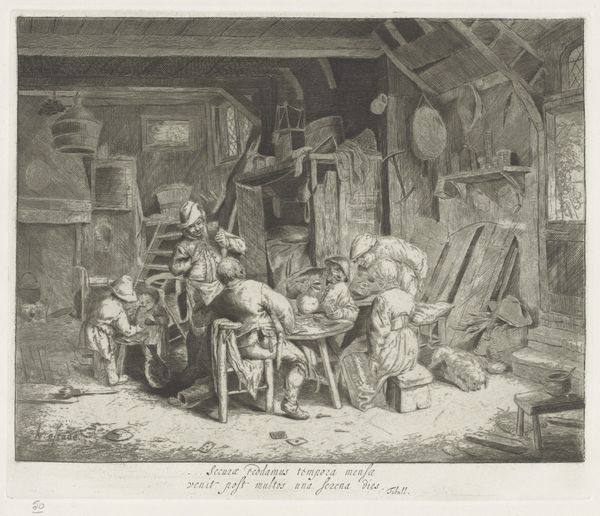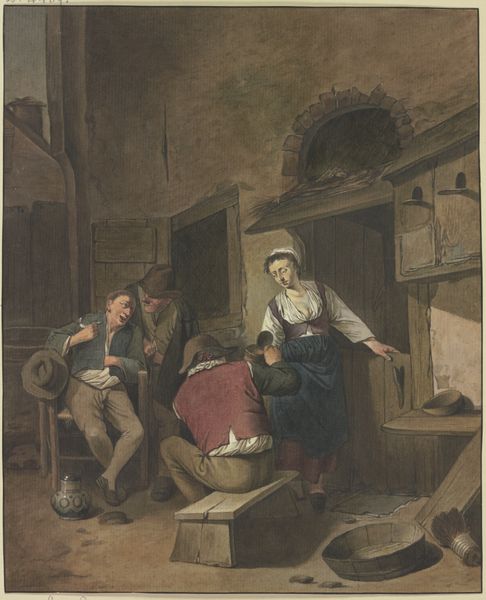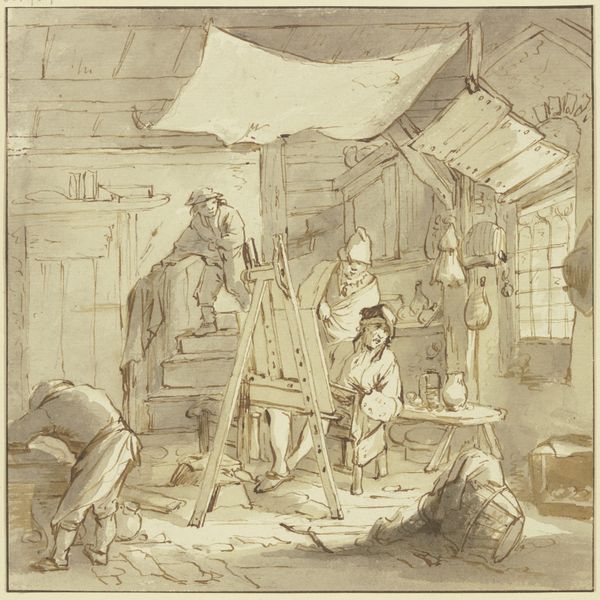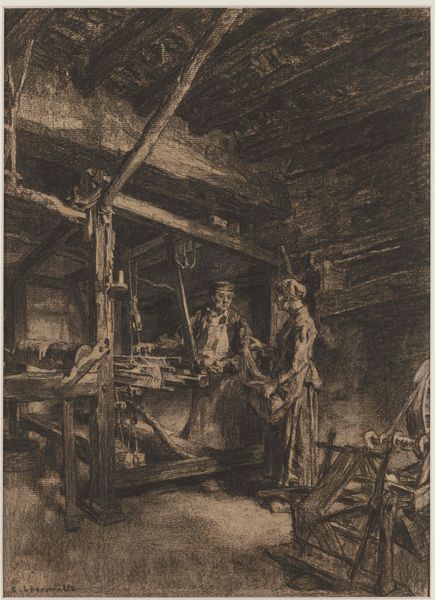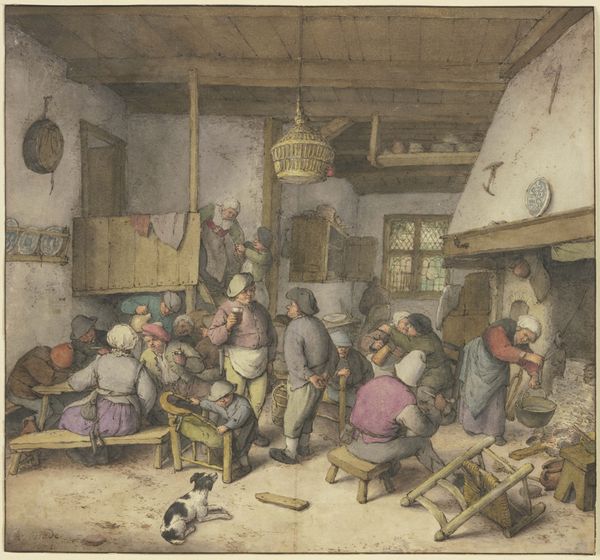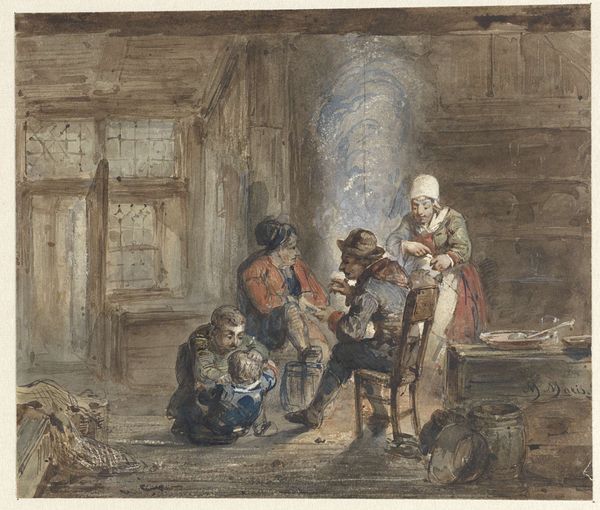
Im Inneren eines Bauernhauses, an der Tür sitzt die Frau, mit dem hinausgehenden Mann sprechend, rechts die Magd mit zwei Wassergefäßen
0:00
0:00
watercolor
#
dutch-golden-age
#
landscape
#
charcoal drawing
#
figuration
#
watercolor
#
watercolour illustration
#
genre-painting
#
watercolor
Copyright: Public Domain
Editor: This is "Inside a Farmhouse, with the Woman Sitting at the Door Speaking with the Man Going Out, the Maid on the Right with Two Water Vessels," by Hermanus van Brussel. It appears to be a watercolor. It strikes me as a very intimate portrayal of Dutch domestic life, but perhaps also one tinged with a bit of melancholy. What do you see in this piece? Curator: It's fascinating how van Brussel captures the ordinary. But let’s think critically about that “ordinariness.” Consider the social hierarchies at play here. The woman indoors, perhaps managing the household, while the man is departing. The maid, positioned lower and actively working. How does this depiction reinforce, or perhaps subtly challenge, existing power structures of the time? Editor: That's a great point. I hadn't considered it that way. It does seem to be very subtly reinforcing the traditional roles of men and women, perhaps unquestioningly. What about the figures in the doorway beyond? Curator: Exactly! The glimpse of the outside world, seemingly populated by other figures, suggests a wider community. But who has access to that community? And what labour sustains that access? We should ask ourselves how class divisions affect the access to public and private spaces in this historical context, as we view this painting. Editor: I guess I was seeing it more as a quiet, observational piece, but now I realize it reveals so much more about the realities of daily life and labour. Curator: Precisely. Art isn’t created in a vacuum. By analyzing its relationship to socio-political structures, we gain a richer understanding not only of the artwork, but also the society that produced it. Perhaps van Brussel aimed simply to capture a scene, but through our analysis, we uncover layers of meaning connected to gender and class. Editor: I learned a great deal from you. I’ll never look at genre painting the same way again. Curator: Likewise. Your initial observation opened the door to exploring the intersection of representation, social reality, and historical power dynamics.
Comments
No comments
Be the first to comment and join the conversation on the ultimate creative platform.
